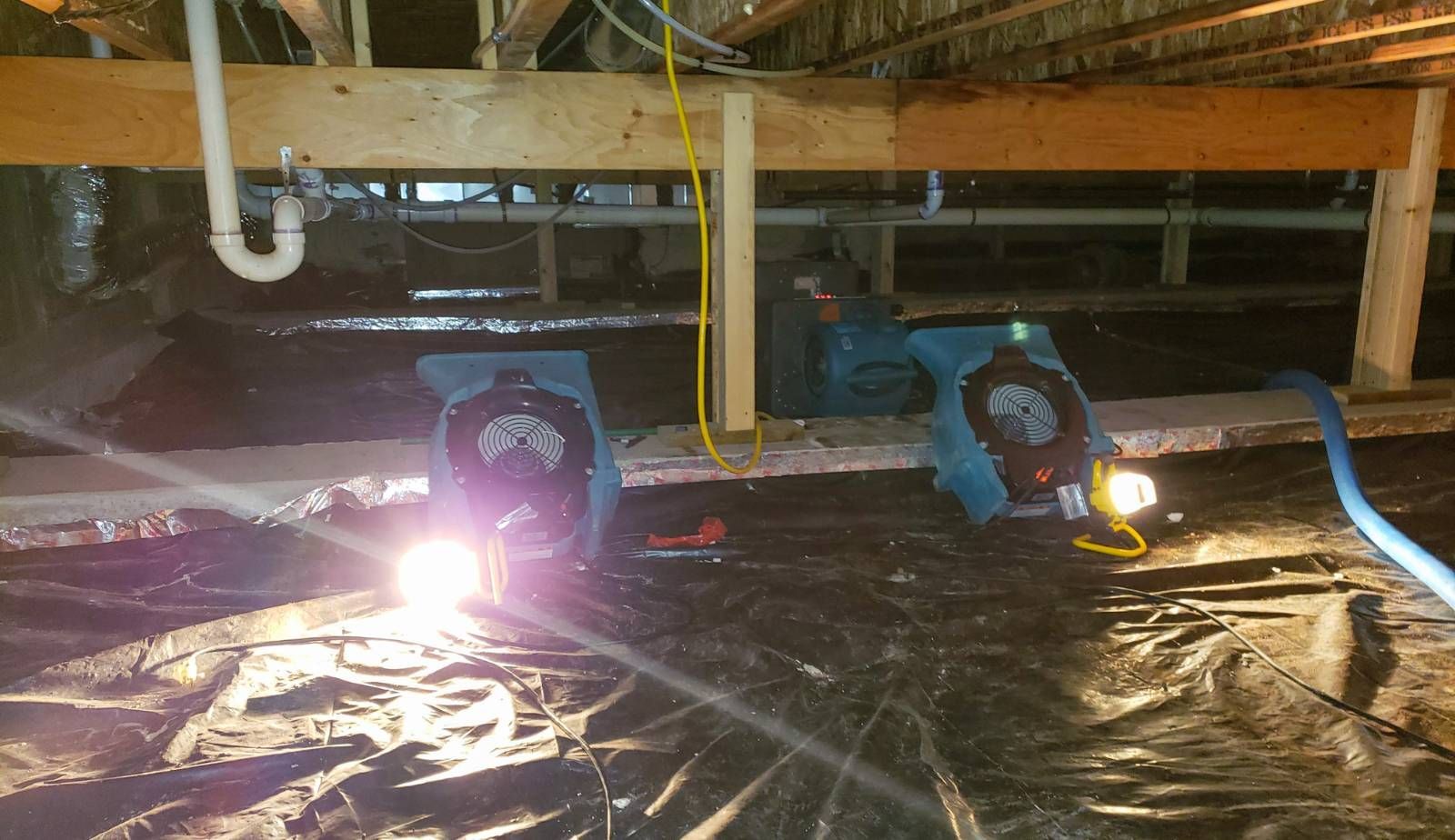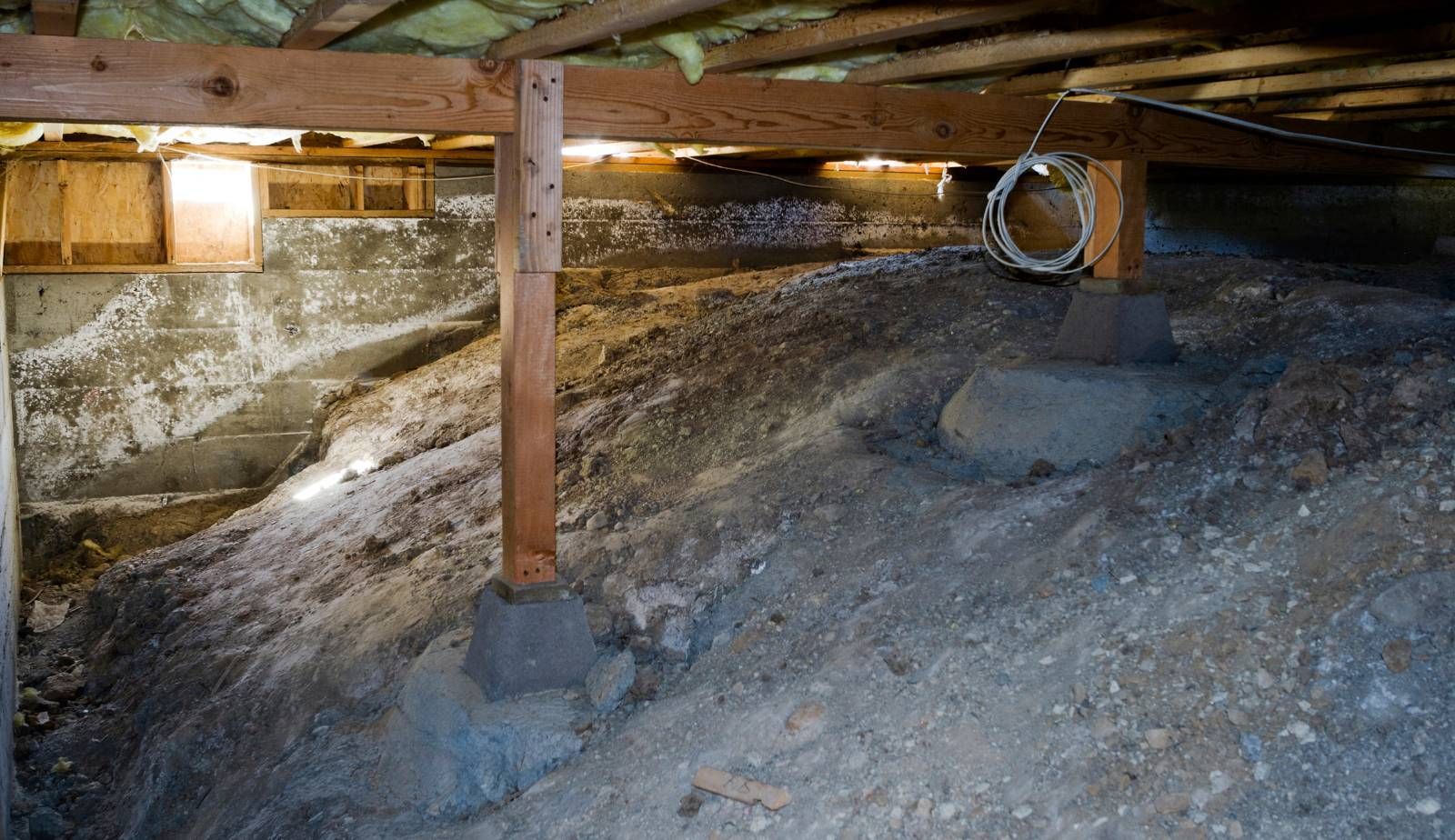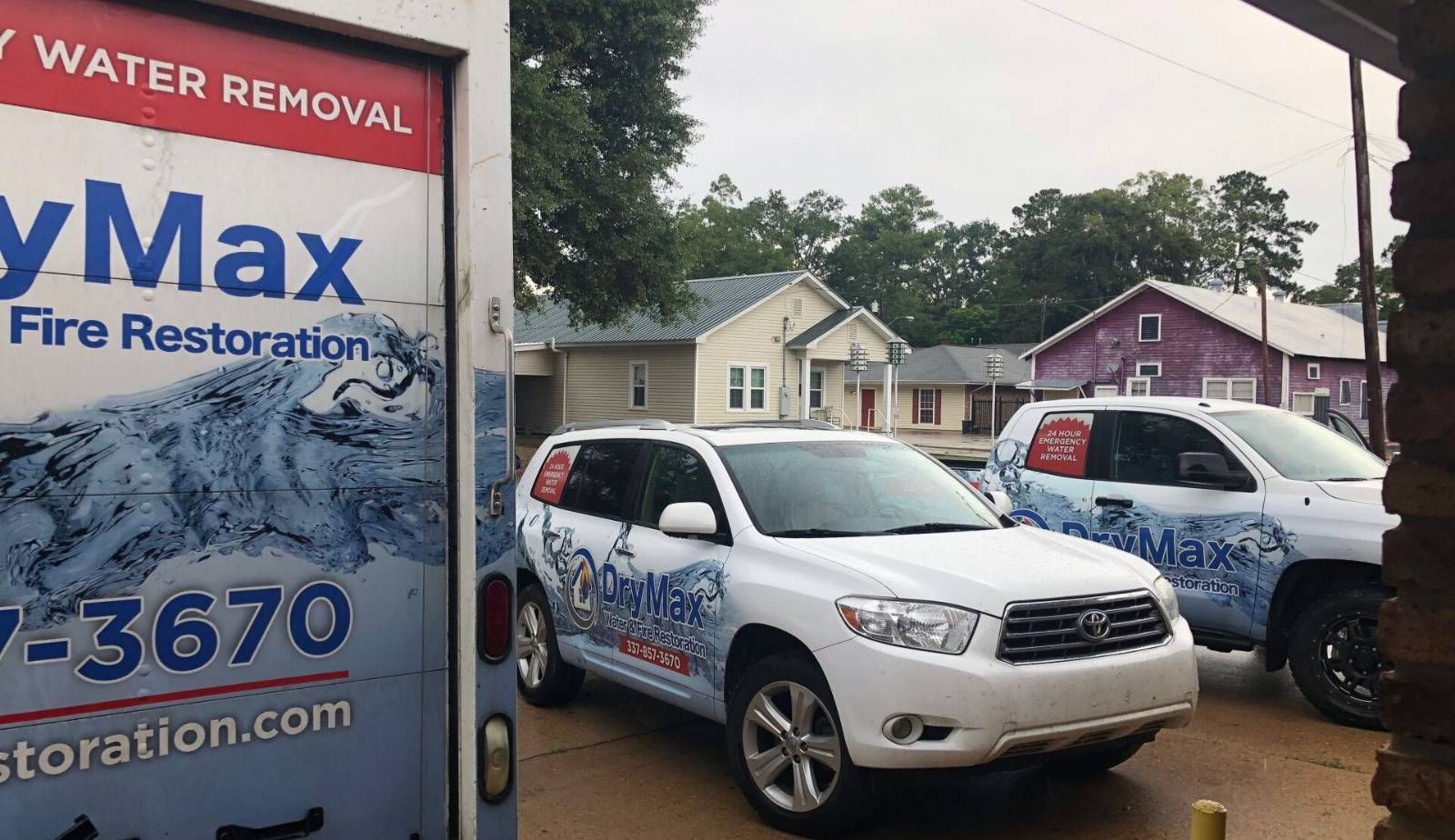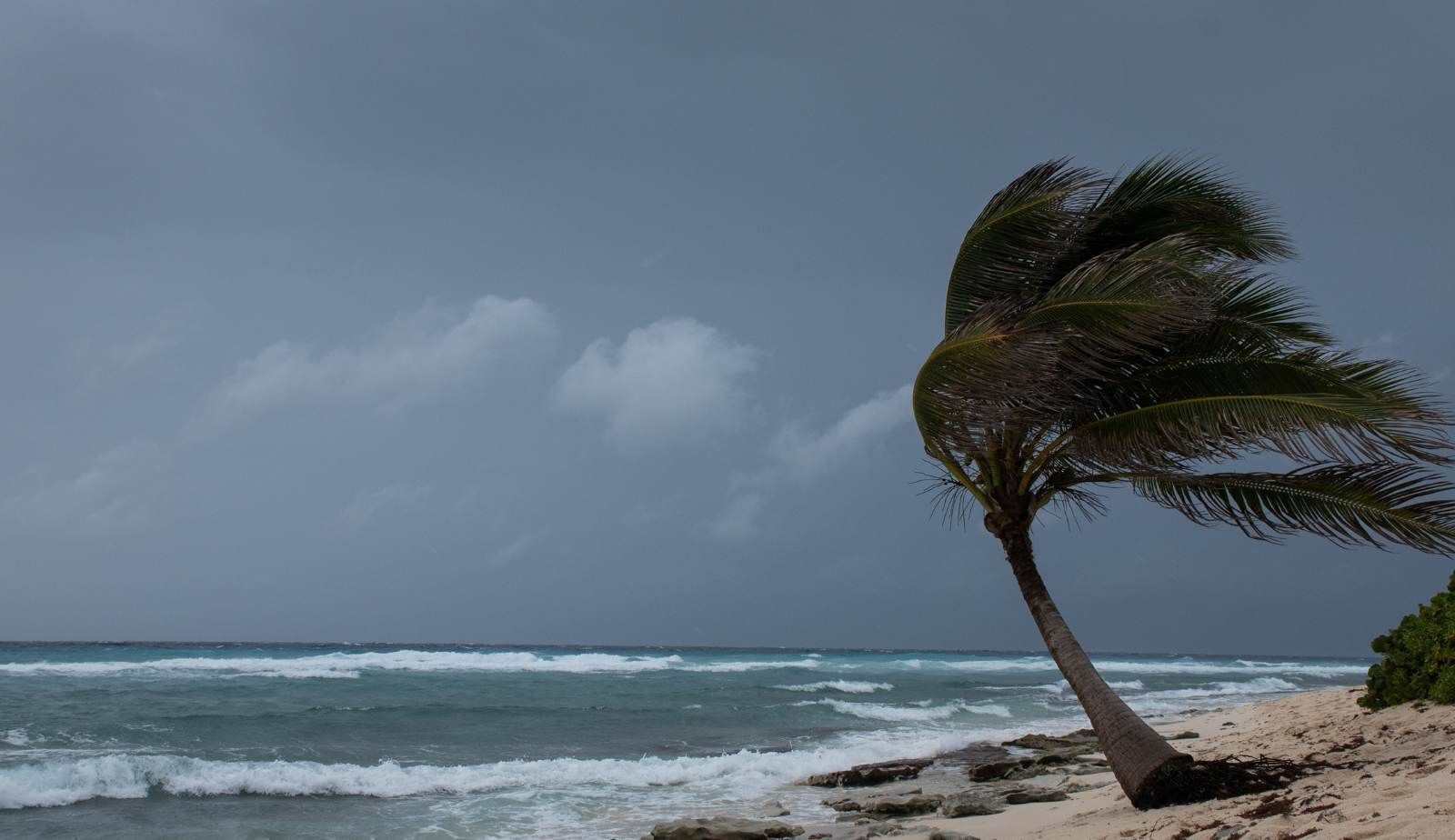Crawl Space Flooding in Louisiana: Understanding Causes, Risks, and Effective Restoration Tips
Crawl space flooding is a prevalent issue in Louisiana due to the region's high humidity and frequent heavy rains. Understanding the causes and risks associated with crawl space flooding is crucial for homeowners seeking to protect their property. From poor drainage and leaky pipes to the rising water tables, these factors can lead to significant damage if left unaddressed.
Moreover, the implications of a flooded crawl space extend beyond structural integrity. Mold growth, wood rot, and a compromised foundation can all result from moisture accumulation in these areas. Property owners must be proactive about managing their crawl spaces, especially in Louisiana's challenging climate.
Drymax offers solutions tailored to combat the effects of high humidity and water intrusion. Their expertise in crawl space restoration equips homeowners with effective strategies to prevent flooding and mitigate damage. By exploring these restoration tips, individuals can safeguard their homes against the persistent threats posed by Louisiana's weather.
Understanding Crawl Space Flooding in Louisiana
Crawl spaces in Louisiana face unique challenges due to regional construction practices and environmental factors. The combination of heavy rainfall and high humidity creates an environment conducive to water intrusion and flooding. Understanding these elements is crucial for effective restoration.
Typical Crawl Space Construction
Most crawl spaces in Louisiana are built with wooden frameworks elevated above the ground, which can be susceptible to moisture. Ventilation is often incorporated to reduce humidity, but this method may not be effective during extended periods of heavy rains. As moisture seeps through soil, it can lead to standing water. In some constructions, plastic sheeting may line the ground, but improper installation can diminish its effectiveness against flooding. Understanding these construction nuances helps in addressing potential vulnerabilities.
Regional Climate Factors
The climate in Louisiana is characterized by high humidity and significant precipitation, particularly during the summer months. Heavy rains can lead to saturated soil, increasing the likelihood of water intrusion into crawl spaces. The warm temperatures further exacerbate moisture retention, promoting mold growth and structural damage. Homeowners must be aware of their local environments and take necessary precautions. Regular inspections can help identify potential risks before extreme weather events occur.
Common Flooding Scenarios
Several scenarios commonly lead to crawl space flooding in Louisiana. Heavy rainfall can overwhelm the drainage systems, leading to water accumulation. Faulty plumbing and leaky pipes also contribute to moisture problems. Additionally, runoff from heavy storms can cause ground saturation, pushing water into crawl spaces. Homeowners may also encounter flooding due to broken water heaters or improper grading around their property. Recognizing these scenarios can aid in prevention and prompt interventions.

Major Causes of Crawl Space Flooding
Crawl space flooding in Louisiana can be attributed to several key factors. Understanding these causes is essential for effective prevention and remediation strategies. The following points will address the significant contributors to crawl space flooding, including the effects of heavy rainfall, hydrostatic pressure, poor drainage systems, and the importance of maintaining gutters and downspouts.
Impact of Heavy Rainfall and Storms
Heavy rainfall and storms are common in Louisiana, particularly during hurricane season. When rainfall exceeds soil absorption rates, water begins to pool around foundations. This excessive water can seep into crawl spaces, leading to flooding.
Prolonged storm events increase the risk of saturated ground, elevating water tables. Homeowners may notice water intrusion through cracks in foundation walls or floors. The accumulation of water creates a favorable environment for mold growth, which can pose health risks.
Hydrostatic Pressure and Groundwater
Hydrostatic pressure occurs when water builds up around a foundation, exerting force on foundation walls. In areas with a high water table, this pressure can lead to significant water infiltration in crawl spaces.
As groundwater rises, it seeks lower elevations, often finding its way into crawl spaces. This pressure can exacerbate existing foundation cracks, causing further damage. It is crucial for homeowners to monitor groundwater levels, especially during heavy rain seasons.
Poor Drainage and Grading
Improper grading and inadequate drainage systems significantly contribute to crawl space flooding. If the grading of the land slopes towards the home, it directs water towards the foundation rather than away from it.
Additionally, poorly designed drainage systems, like French drains that are not functioning effectively, can lead to water accumulation. Homeowners should ensure that grading is adequate, promoting a slope away from the foundation. Installing or repairing drainage systems can mitigate flooding risks significantly.
Faulty Downspouts and Clogged Gutters
Faulty downspouts and clogged gutters increase the likelihood of water pooling around the foundation. Downspouts must direct rainwater at least six feet away from the house. If they are broken or improperly positioned, they can lead to water buildup.
Clogged gutters prevent the free flow of water, causing it to overflow and accumulate near the foundation. Regular maintenance of gutters and downspouts is essential, especially during peak rainy seasons. This simple action can significantly reduce the risk of crawl space flooding.
Risks and Consequences of Water Intrusion
Water intrusion in crawl spaces can lead to significant issues that affect both health and home integrity. Key concerns include mold growth impacting indoor air quality, structural damage threatening safety, rising utility costs, and various pest infestations.
Mold Growth and Air Quality Issues
Mold thrives in damp environments, and crawl spaces are particularly susceptible to mold growth due to high humidity and standing water. When moisture levels exceed 60%, mold spores can multiply quickly. This leads to a musty odor in the home and can trigger health risks such as asthma and allergies.
The presence of mold can also significantly degrade indoor air quality, as it releases spores and volatile organic compounds (VOCs) into the air. Continuous exposure to these elements can cause respiratory issues and other health problems. Proper remediation is crucial to eliminate mold and ensure a safe living environment.
Structural Damage and Sagging Floors
Water intrusion can compromise the structural integrity of a home. Prolonged exposure to moisture can weaken beams, joists, and the foundation, resulting in costly repairs. Signs of structural damage may include sagging floors and cracks in walls.
As components of the home absorb moisture, they become less stable, increasing the risk of major failures. Homeowners must act quickly to address water intrusion to prevent further deterioration that could lead to unsafe living conditions or costly renovations.
Rising Utility and Energy Bills
Moisture buildup in crawl spaces can cause fluctuations in indoor temperatures. This forces heating and cooling systems to work harder to maintain comfort levels. As a result, homeowners often find their utility bills rising unexpectedly.
Inadequate insulation and the presence of dampness can lead to inefficient energy usage. By addressing water intrusion issues, homeowners can improve energy efficiency and reduce monthly bills, making their homes more comfortable and cost-effective.
Pest Infestations and Odors
Damp environments attract various pests, including insects and rodents, that search for suitable habitats. A wet crawl space can become a breeding ground for these pests, which can cause additional issues. They may bring diseases or cause further damage to the home.
Additionally, the moisture leads to musty odors that can permeate throughout the house. These odors can be unpleasant and may indicate deeper issues within the home. Regular inspections and prompt action can prevent infestations and unpleasant smells, ensuring a healthier home environment.

How High Humidity Intensifies Crawl Space Problems
High humidity significantly impacts crawl spaces, creating conditions that lead to various moisture-related issues. Understanding these problems is essential for effective moisture control and restoration.
Humidity Levels and Condensation
In humid climates, such as Louisiana, humidity levels often exceed 60%. When warm air from outside enters a cooler crawl space, condensation occurs as the air cools. This leads to water droplets forming on surfaces, exacerbating moisture problems.
This condensation can create a damp environment, perfect for mold growth and pest attraction. Keeping track of humidity levels is crucial for homeowners. Regularly monitoring can help detect issues early and facilitate timely interventions.
Moisture Buildup and Materials Deterioration
Persistent moisture buildup from high humidity causes deterioration of materials in crawl spaces. Wooden beams and structures, if exposed to excessive wet conditions, can become prone to rot. This deterioration weakens structural integrity and increases repair costs.
Wet materials not only compromise stability but also foster conditions that support mold and mildew growth. As these fungi proliferate, they contribute to health risks for occupants and can lead to significant property damage.
Role of Crawl Space Vents and Foundation Vents
Crawl space vents have long been considered a solution for moisture control. However, in regions with high humidity, these vents may exacerbate the problem by allowing moist air to enter. This outdated practice can result in higher humidity levels indoors.
Foundation vents, while intended to promote airflow, can unintentionally introduce more moisture. An alternative approach involves sealing off these vents and utilizing dehumidifiers. This strategy helps maintain a dryer environment, mitigating the risk of mold and moisture-related damage.
Best Practices for Preventing Flooded Crawl Spaces
Effective prevention of crawl space flooding involves a combination of drainage systems, waterproofing solutions, and proper insulation techniques. Implementing these practices can reduce moisture buildup and enhance the structural integrity of the home.
Drainage Systems and Flood Vents
A reliable drainage system is essential for preventing water accumulation in crawl spaces. French drains are often installed to redirect water away from the foundation. These systems typically consist of perforated pipes buried in gravel, allowing water to flow away efficiently.
In addition, incorporating flood vents is crucial in flood-prone areas. These vents allow floodwaters to enter and exit the crawl space, equalizing pressure and minimizing damage. Placement should follow local building codes to ensure effectiveness and compliance.
Regular maintenance of these systems is vital. Homeowners should inspect them annually to clear any debris that could impede water flow.
Waterproofing Solutions and Encapsulation
Waterproofing is another critical aspect of preventing crawl space flooding. Applying a high-quality vapor barrier over dirt floors can significantly reduce moisture infiltration. This barrier should cover the entire area and be properly sealed at seams to maximize effectiveness.
Crawl space encapsulation elevates this process further. It involves sealing the crawl space’s walls and floor with a heavy-duty vapor barrier and insulating the walls. This keeps humidity levels low and prevents water from entering, thereby creating a dry environment.
It's recommended that a dehumidifier be installed in conjunction with encapsulation to control humidity levels actively. This combination creates a robust defense against moisture-related issues.
Proper Insulation and Drainage Matting
Insulation plays a pivotal role in moisture management within crawl spaces. Installing insulation on the walls helps maintain consistent temperatures, reducing condensation risks. Use materials that are resistant to moisture and mold for best results.
Drainage matting can further enhance this setup. This elevated matting allows air circulation beneath insulation, reducing condensation. It provides a channel for moisture that might accumulate to drain away effectively.
Careful installation of these materials fosters a long-lasting, moisture-resistant environment. Sealing gaps and ensuring proper coverage can significantly contribute to overall effectiveness, protecting the structure from potential flooding.
Effective Restoration Tips After Crawl Space Flooding
Prompt action is crucial for effective restoration after crawl space flooding. Addressing water removal, sanitization, structural repairs, and improving indoor air quality are key steps to mitigate damage and prevent long-term issues.
Remove Water and Dry Wet Materials
The first step is to effectively remove water from the crawl space. Utilizing a general-purpose pump is essential for extracting significant volumes of water. For smaller amounts, a wet/dry vacuum can suffice.
Once the standing water is eliminated, focus on drying wet materials. Disconnect any electrical sources before beginning. Remove and dispose of soaked insulation, carpets, and other absorbent materials.
Heavier items may require additional manpower for safe disposal. Keep in mind that using dehumidifiers can help lower moisture levels in the air, speeding up the drying process.
Sanitization and Mold Remediation
Sanitizing the affected area is critical to preventing mold growth. Start by thoroughly cleaning surfaces with a mixture of water and detergent. This will eliminate dirt and contaminants.
For mold remediation, inspect all wooden structures and areas with potential mold growth. It is advisable to use a specialized mold removal solution. If mold is extensive or persistent, it may be necessary to consult professionals.
Taking preventative steps, such as sealing foundation cracks and insulating pipes, can also be beneficial. This not only helps in immediate remediation but protects against future issues.
Repair Structural Components
Flooding can compromise the structural integrity of a crawl space. Inspect the foundation and wooden beams for signs of damage such as wood rot. Any damaged components should be replaced immediately to maintain stability.
In some cases, foundation repair may also be necessary. Cracks in the foundation can allow water to seep back in, leading to future flooding. It’s crucial to consult a structural engineer if extensive damage is noted.
Reinforcing these components will provide a stronger base to withstand future challenges from heavy rains or high humidity common in Louisiana.
Improving Indoor Air Quality
After a flood, indoor air quality often deteriorates due to moisture and contaminants. Investing in a high-quality dehumidifier is a wise choice. This equipment helps reduce humidity levels, thus preventing the growth of mold and improving air quality.
Additionally, consider installing ventilation systems that enhance air circulation. This can further aid in reducing humidity and eliminates stale odors.
Regular inspections and maintenance should also be part of the routine. Ensuring that crawl spaces remain dry and well-ventilated will contribute significantly to healthier indoor environments.
How Drymax Addresses Crawl Space Flooding Challenges
Drymax employs a comprehensive approach to mitigate crawl space flooding issues in Louisiana. By focusing on customized assessments, effective installation, and ongoing maintenance, they ensure optimal moisture control and protect homes from water damage.
Custom Assessment and Solutions
Drymax begins with a thorough evaluation of the crawl space to identify specific challenges related to flooding and moisture. This custom assessment includes checking for drainage issues, humidity levels, and existing damage.
After understanding the unique conditions, Drymax develops tailored solutions. This might involve recommending certain waterproofing solutions, such as improved drainage systems and targeted repairs. The focus is always on creating an effective strategy that addresses the root causes of moisture problems.
Installation of Sump Pumps and Dehumidifiers
To combat heavy rains and high humidity, Drymax installs high-quality sump pumps and dehumidifiers. The sump pump serves as a primary defense against flooding by collecting and redirecting water away from the crawl space.
Dehumidifiers play a critical role in maintaining a dry environment. They remove excess moisture from the air, lowering humidity levels. Together, these systems significantly reduce the likelihood of mold growth and structural damage, providing a more stable environment beneath the home.
Encapsulation and Vapor Barrier Systems
Drymax utilizes encapsulation techniques to create a moisture-resistant barrier. This involves sealing off the crawl space with durable encapsulation materials. Vapor barriers are installed to prevent ground moisture from entering the area.
This approach not only protects against current water intrusions but also prevents future moisture problems. Encapsulation enhances the overall air quality in the home and can lead to increased energy efficiency by minimizing temperature fluctuations.
Monitoring Humidity and Ongoing Maintenance
After implementing the necessary solutions, Drymax emphasizes continuous monitoring. They set up humidity sensors to track moisture levels within the crawl space. This allows for timely intervention if levels rise again.
Regular maintenance checks are vital for long-term success. Drymax offers maintenance plans to ensure systems like sump pumps and dehumidifiers are functioning properly. This ongoing care helps maintain a dry, healthy environment over time, minimizing the risks associated with crawl space flooding.

Frequently Asked Questions
Crawl space flooding in Louisiana poses significant challenges. Understanding the common causes, insurance implications, repair costs, humidity management strategies, and immediate actions can empower homeowners to address these issues effectively.
What are the common causes of flooding in Louisiana crawl spaces?
Crawl space flooding in Louisiana often results from heavy rains, resulting in water accumulation. Other factors include leaky plumbing, improper drainage systems, and flooding from natural disasters. Additionally, high humidity levels can exacerbate moisture issues in these areas.
Can crawl space water damage be covered by homeowners' insurance?
Homeowners' insurance may cover water damage if it results from sudden and accidental events, such as a burst pipe. However, gradual issues, like flooding from heavy rains, may not be covered. It's essential for homeowners to review their individual policies for specifics.
What is the estimated cost for repairing a flooded crawl space?
Repair costs for a flooded crawl space can vary widely. Factors such as the extent of the damage, required repairs, and local labor rates can influence pricing. On average, homeowners might expect to pay anywhere from $2,000 to $10,000 for comprehensive repairs.
What are effective solutions for managing humidity and preventing flood damage in crawl spaces?
To manage humidity, installing dehumidifiers and using exhaust fans can be effective. Maintaining proper drainage around the home, keeping gutters clean, and using vapor barriers can also prevent water intrusion. Regular inspections can further mitigate risks.
How does encapsulation help in maintaining a dry and flood-resistant crawl space?
Encapsulation involves sealing the crawl space to prevent moisture entry. This method can reduce humidity levels significantly and deter mold growth. By using durable materials and sealing off vents, encapsulation contributes to a healthier living environment.
What steps should be taken immediately to dry out a crawl space after flooding occurs?
After flooding, it's crucial to remove any standing water quickly using pumps or wet vacuums. Ventilation should be maximized by opening access points and using fans. Additionally, drying out materials and monitoring for mold growth is vital to prevent long-term damage.
You might also like
DryMax Restoration Blogs




